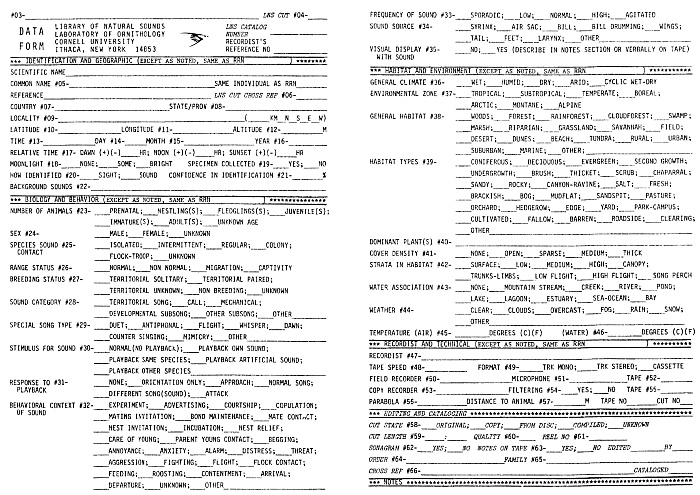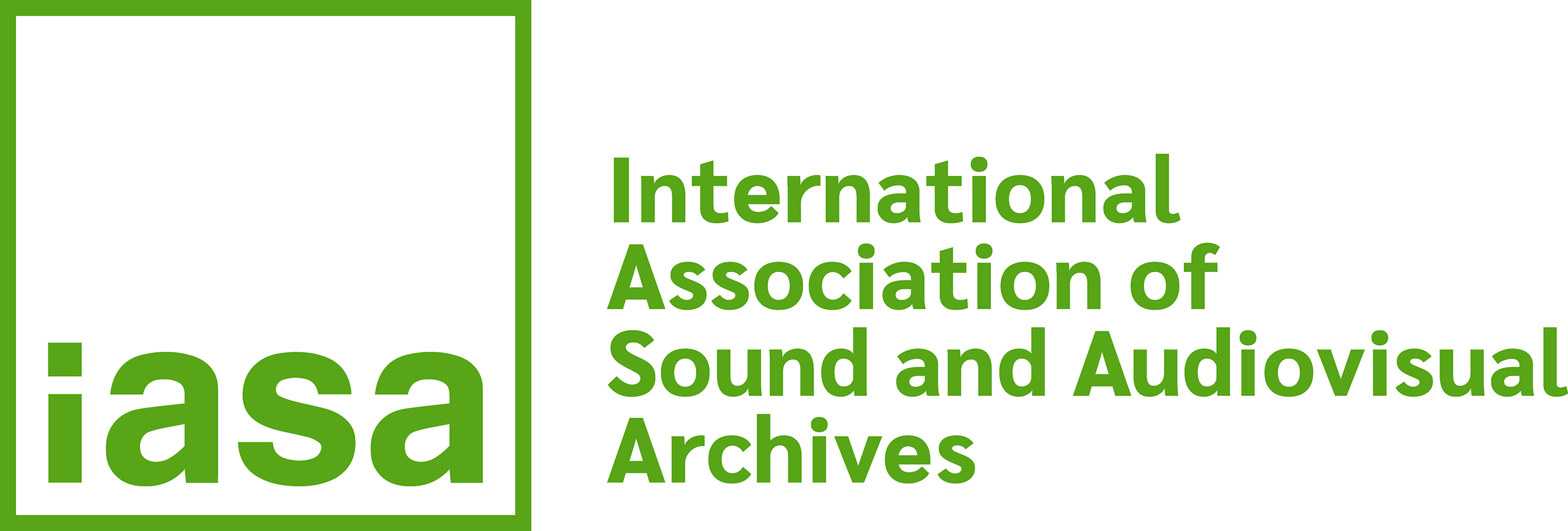6. Documentation
Wildlife sound recordings without adequate documentation are of little value. The fuller the documentation the better. The minimum data required are: name of recordist; recording speed and duration; locality; date; species name; type of sound; number of animals and sex if known. The following further details are needed if the recordings are to have real scientific value: recording equipment; time of day; weather (especially temperature for insects and amphibians); habitat; associated behaviour and circumstances. This information should be noted down in some form in the field at the time the recording is made. Dictating notes onto the tape immediately after the recording is a particularly good method, or the details can be entered in a field notebook.
Eventually there must be a completed standard data sheet to accompany each tape recording in the archive (a specimen of the form used by BLOWS is shown on page 44.). It is best if these are completed by the recordist. Since writing down all the information is a considerable task, a form on which the recordist can simply tick-off the appropriate pre-printed details has some advantages. Dr James Gulledge has devised such a form for recordings contributed to the Cornell Library of Natural Sounds (see figure 1). This lends itself to quick completion in the field and has the further advantage that it can be used directly for computer input.

Figure 1
The standardisation of species nomenclature is a difficult question, but it is important to be consistent. The scientific name must, of course, be the definitive one, since vernacular names vary widely. One authority should be followed rigidly for each class of animal. A local archive might do best by following the recognised standard work (book or check-list) for the various fauna of its area. Archives which are international in outlook should use a world species list widely recognised as the best authority and used by other such wildlife sound libraries e.g. Morony, Bock and Farrand Reference Lists of Birds of the World; American Museum of Natural History: New York; 1975.


